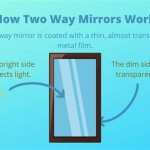Can I Screen Mirror From iPhone to MacBook Air?
Screen mirroring, also known as screen casting, is the process of wirelessly transmitting the display of one device onto another. This feature is particularly useful for a variety of purposes, including presentations, sharing photos and videos, and even playing mobile games on a larger screen. The question of whether one can screen mirror from an iPhone to a MacBook Air is a common one, considering the prevalence of both devices in modern digital environments. The answer is yes, it is indeed possible to screen mirror from an iPhone to a MacBook Air, though the specific method employed depends on factors such as the operating system versions, available software, and desired level of functionality.
The primary methods for screen mirroring from an iPhone to a MacBook Air involve utilizing built-in features, third-party applications, or a combination of both. Each approach presents its own set of advantages and disadvantages, which will be outlined in this article. Understanding these methods and their associated requirements is essential for successfully mirroring the iPhone screen onto the MacBook Air.
The article will explore the use of AirPlay, which is a native Apple technology designed for seamless connectivity between Apple devices. Additionally, various third-party screen mirroring applications will be reviewed, highlighting their compatibility, features, and limitations. Finally, this discussion will incorporate practical considerations, such as network requirements and potential troubleshooting steps, to ensure a smooth screen mirroring experience.
AirPlay: Apple's Native Screen Mirroring Solution
AirPlay is Apple's proprietary wireless streaming protocol, designed to facilitate the transmission of audio and video content between Apple devices over a Wi-Fi network. This technology is deeply integrated into the iOS and macOS ecosystems, providing a relatively seamless and straightforward approach to screen mirroring. To utilize AirPlay for mirroring an iPhone screen to a MacBook Air, both devices must be connected to the same Wi-Fi network and be signed into the same Apple ID (though this is not always strictly required for basic screen mirroring). The MacBook Air needs to be running a version of macOS that supports AirPlay receiving capabilities.
The specific version of macOS required to receive AirPlay streams depends on the version originating the stream. Generally, newer operating systems on both devices offer better compatibility and features. Older versions may require software updates or may not support all AirPlay functionalities. For example, Screen Mirroring may not be available on macOS versions prior to macOS Monterey.
To initiate screen mirroring using AirPlay, the user typically accesses the Control Center on their iPhone by swiping down from the top-right corner of the screen (on iPhones with Face ID) or swiping up from the bottom edge of the screen (on iPhones with a Home button). Within the Control Center, there should be a "Screen Mirroring" button. Tapping this button will display a list of available AirPlay-compatible devices on the network. The MacBook Air should appear in this list if all requirements are met. Selecting the MacBook Air will initiate the mirroring process.
Upon selecting the MacBook Air, a passcode may be displayed on the MacBook Air's screen. This passcode needs to be entered on the iPhone to confirm the connection and establish the screen mirroring session. This security measure is designed to prevent unauthorized devices from accessing the iPhone's screen. Once the passcode is entered correctly, the iPhone's display will be mirrored onto the MacBook Air's screen.
AirPlay offers a convenient and relatively low-latency screen mirroring experience for many users. However, it is important to note that its performance is heavily reliant on the stability and bandwidth of the Wi-Fi network. Congested networks or weak Wi-Fi signals can lead to lag, stuttering, or disconnects during the screen mirroring session. Furthermore, AirPlay's functionality is limited to the Apple ecosystem, meaning it cannot be directly used with devices from other manufacturers.
AirPlay also allows for extending the display, rather than simply mirroring it. This means the MacBook Air can act as a second monitor for the iPhone, providing additional screen real estate. The functionality offers a unique use case but uses more bandwidth.
To stop the screen mirroring session, the user can either tap the "Stop Mirroring" button in the Control Center on their iPhone or disconnect the AirPlay connection from the MacBook Air's display settings. This will terminate the wireless connection and return both devices to their normal operating modes.
Third-Party Screen Mirroring Applications
In addition to AirPlay, numerous third-party screen mirroring applications are available that offer alternative solutions for mirroring an iPhone screen to a MacBook Air. These applications often provide additional features, cross-platform compatibility, or enhanced performance compared to AirPlay. Some popular examples of such applications include Reflector, AirServer, and LetsView. These applications are typically available for download from the Mac App Store or the developers' websites.
These applications often require the installation of software on both the iPhone and the MacBook Air. The iPhone app is often free, but the macOS app may require a one-time purchase or a subscription. Once installed, the applications typically guide the user through the steps necessary to establish a connection. This often involves ensuring that both devices are on the same Wi-Fi network and that the necessary permissions are granted.
Third-party screen mirroring applications often offer a wider range of features than AirPlay, such as the ability to record screen mirroring sessions, annotate the mirrored screen, or control the iPhone from the MacBook Air. Some applications also support mirroring from multiple devices simultaneously, which can be useful for collaborative presentations or demonstrations.
The performance of third-party screen mirroring applications can vary depending on the specific application, the network conditions, and the hardware capabilities of the devices involved. Some applications may offer better optimization for specific types of content, such as video streaming or gaming, while others may prioritize compatibility with a wider range of devices. It is important to research and test different applications to find the one that best meets the user's specific needs.
Another advantage of some third-party applications is their cross-platform compatibility. While AirPlay is limited to Apple devices, some third-party applications can also be used to mirror the iPhone screen to Windows PCs, Android devices, or even smart TVs. This can be particularly useful for users who have a mixed ecosystem of devices.
When selecting a third-party screen mirroring application, it is important to consider factors such as the application's price, features, performance, and security. Some applications may contain ads or require access to sensitive data, so it is important to choose a reputable application from a trusted developer. Reading user reviews and checking the application's privacy policy can help to ensure a safe and reliable screen mirroring experience.
Furthermore, third-party applications might offer functionalities that are not available within AirPlay, such as screen recording directly from the mirroring app on the MacBook Air, allowing users to capture tutorials or presentations easily. Some apps also have settings to optimize the video quality or frame rate based on network conditions, giving users more control over their mirroring experience.
Practical Considerations and Troubleshooting
Regardless of whether AirPlay or a third-party application is used, several practical considerations can affect the screen mirroring experience. Ensuring a stable and reliable Wi-Fi network is crucial for optimal performance. A strong Wi-Fi signal and sufficient bandwidth can minimize lag, stuttering, and disconnects during the screen mirroring session. It is also recommended to avoid using congested Wi-Fi channels or networks with excessive interference.
The hardware capabilities of both the iPhone and the MacBook Air can also impact the screen mirroring performance. Older devices with slower processors or less memory may struggle to handle the demands of screen mirroring, resulting in lower frame rates or reduced image quality. Updating the operating system and firmware on both devices can sometimes improve performance by optimizing the software for screen mirroring.
If encountering issues with screen mirroring, several troubleshooting steps can be taken. First, ensure that both devices are connected to the same Wi-Fi network and that Wi-Fi is enabled on both devices. Second, verify that the AirPlay or third-party application settings are configured correctly. Third, try restarting both the iPhone and the MacBook Air. Fourth, check for software updates on both devices. Finally, if the issue persists, consult the documentation or support resources for the specific screen mirroring method being used.
Firewall settings on the MacBook Air can sometimes interfere with screen mirroring. Ensure that the firewall is not blocking the necessary ports or applications. Temporarily disabling the firewall can help to determine if it is the cause of the issue. If so, configure the firewall to allow exceptions for AirPlay or the third-party screen mirroring application.
Another potential issue is interference from other wireless devices. Wireless routers, Bluetooth devices, and other electronic devices can sometimes interfere with Wi-Fi signals, causing performance problems during screen mirroring. Try moving the iPhone and MacBook Air closer to the Wi-Fi router and away from other potential sources of interference.
Battery life on the iPhone can also be a concern during extended screen mirroring sessions. Mirroring the screen consumes significant battery power, so it is recommended to connect the iPhone to a power source while mirroring for prolonged periods. This will prevent the battery from draining quickly and ensure that the screen mirroring session is not interrupted.
Finally, it is important to be aware of security implications when screen mirroring. Avoid mirroring sensitive or confidential information in public places, as others may be able to view the screen. If using AirPlay, consider enabling passcode protection to prevent unauthorized devices from connecting to the iPhone. Additionally, review the privacy policies of third-party screen mirroring applications to understand how they handle user data.
By considering these practical factors and troubleshooting steps, users can maximize the likelihood of a successful and enjoyable screen mirroring experience from their iPhone to their MacBook Air.

How To Mirror Iphone Mac Without Wi Fi

How To Screen Mirror Iphone Mac Full Guide

2024 Updated How To Mirror Iphone Mac With 5 Methods

2024 How To Mirror Iphone Display Mac Ios 14 And Big Sur

2024 Updated How To Mirror Iphone Mac With 5 Methods

How To Use Apple Airplay Mirror Your Iphone Mac Screen On Tv Roku And More Cnet

How To Use Apple Airplay Mirror Your Iphone Mac Screen On Tv Roku And More Cnet

Newest How To Mirror Iphone Mac Macbook Airdroid

How To Mirror Iphone Mac Without Hassle

Use Airplay To Stream Or Mirror The Screen Of Your Iphone Apple Support








